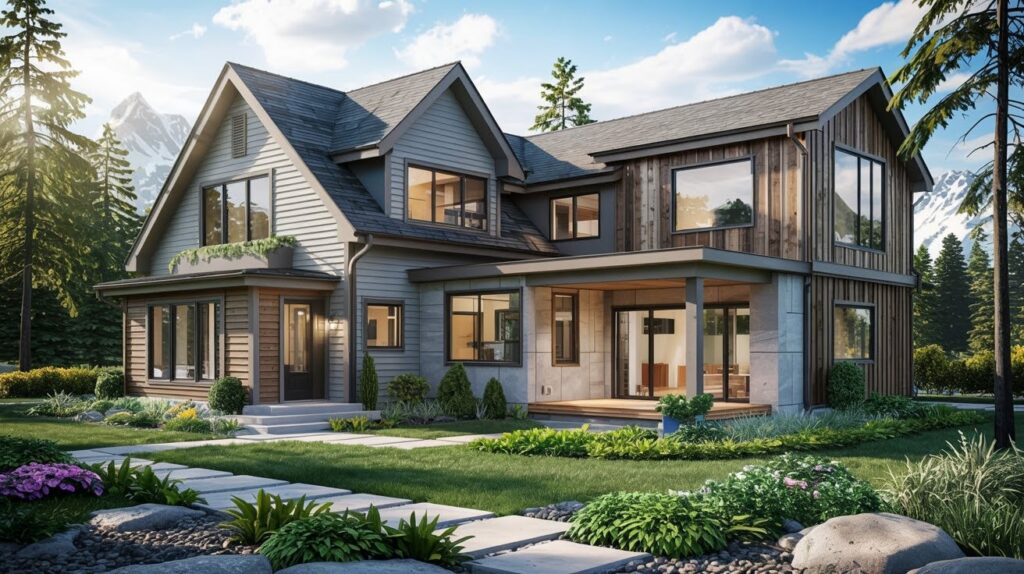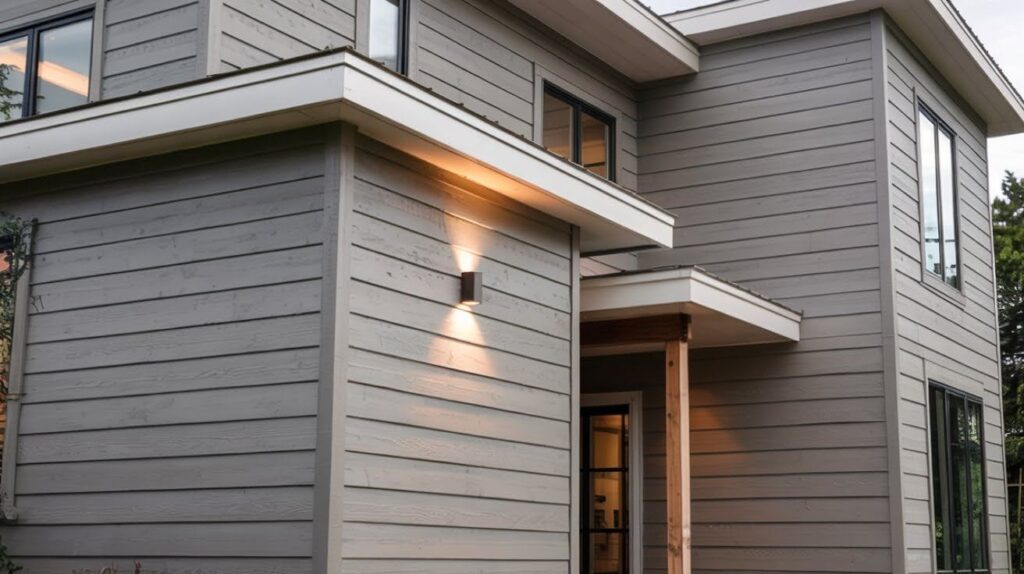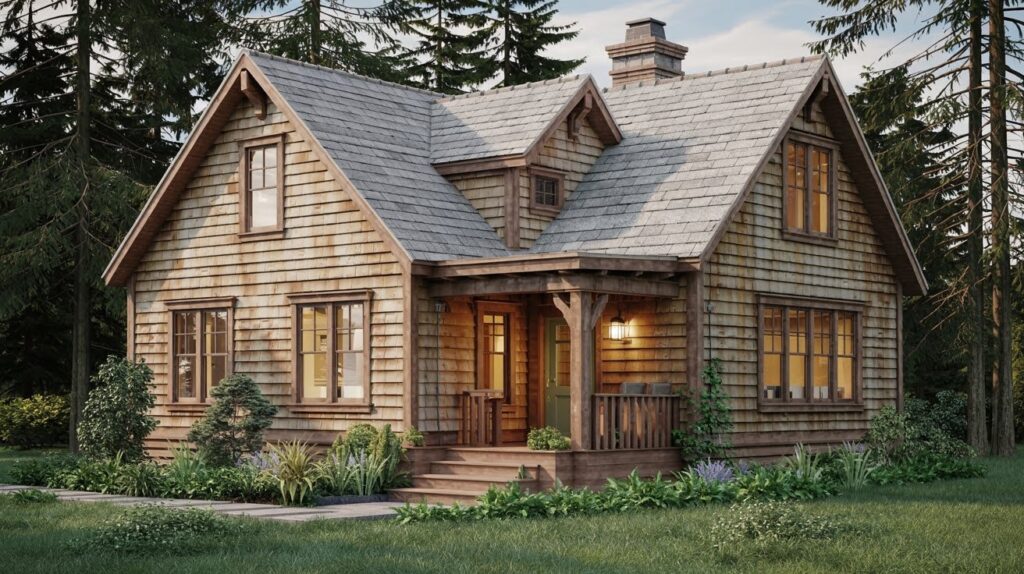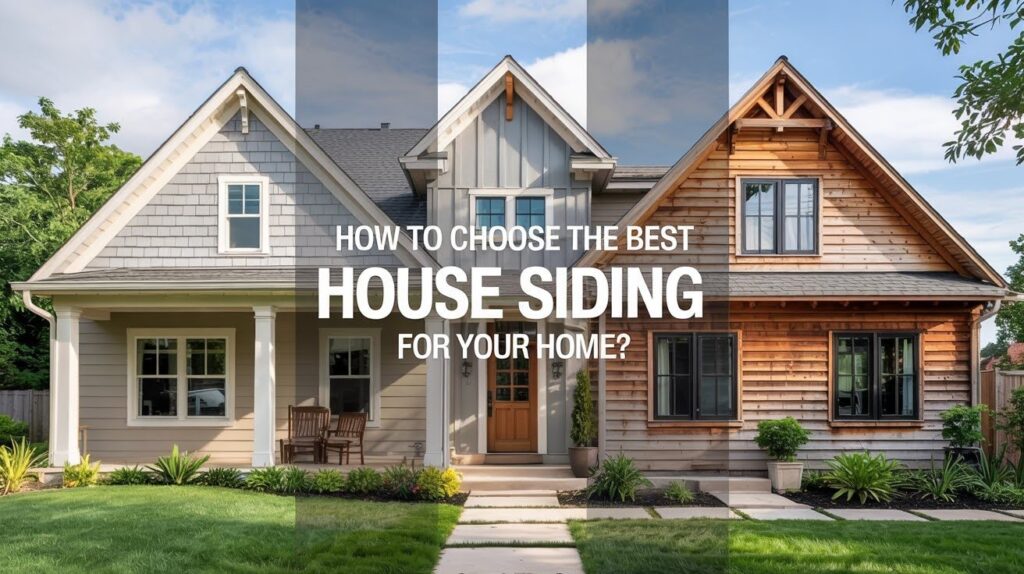One of the most significant external improvements you can make to your house is siding. It enhances energy efficiency, provides weather protection, and has a significant impact on curb appeal and resale value.
How to pick the best siding for your home based on your needs and budget is explained in this guide.
I’ll go over various siding options, their benefits and drawbacks, and the most important considerations.
Durability, upkeep needs, expenses, and appearance choices will all be covered. This information helps you make an informed choice whether you’re replacing old siding or building new.
Together, we can choose the ideal siding for your house.
Understanding the Purpose of Siding

Siding protects your house from weather elements, provides insulation to control indoor temperatures, and creates the visual appearance that defines your home’s curb appeal.
Replace your siding when you notice cracks, warping, buckling, mold, rot, fading colors, or increased energy bills. These signs indicate your siding no longer protects or insulates effectively.
New siding provides a strong return on investment, recouping 70 to 80 percent of its cost when you sell. Fresh siding makes your home more attractive to potential buyers and speeds up sales.
Key Factors to Consider Before Choosing Siding

Consider durability, appearance, cost, maintenance needs, and energy efficiency when selecting siding for your home’s specific requirements.
1. Durability and Weather Resistance
Different climates require different siding performance. Humid areas need moisture-resistant materials.
Coastal regions require corrosion-resistant options. Cold climates demand materials that won’t crack in freezing temperatures. Choose siding rated for your specific climate and wind conditions.
2. Visual Appeal and Style
Siding dramatically influences your home’s architectural style. Modern board-and-batten creates clean, vertical lines.
Traditional lap siding suits colonial and craftsman styles. Rustic shakes add texture to cabin designs. Light colors make homes appear larger while dark colors add drama.
3. Cost and Long-Term Value
Initial installation costs vary widely between siding materials. Lifetime maintenance costs add significantly to total ownership expenses.
Cheap siding requiring frequent repairs costs more over time. Budget for both installation and projected maintenance over 20 to 30 years.
4. Maintenance Requirements
Low-maintenance materials like vinyl and fiber cement require only occasional cleaning. High-maintenance materials like wood demand regular painting every few years.
Most siding needs washing once or twice yearly. Painting schedules range from never for vinyl to every 3 to 7 years for wood.
5. Energy Efficiency and Sustainability
Insulation-backed siding improves energy savings by reducing heat transfer through walls. Eco-friendly options include recycled materials and sustainably harvested wood. Energy-efficient siding often qualifies for tax credits or rebates.
Popular Types of House Siding
Compare vinyl, fiber cement, wood, engineered wood, metal, and stone siding options with pros, cons, and ideal uses.
1. Vinyl Siding

Pros: Affordable pricing makes it accessible for most budgets. Low maintenance requires only occasional washing. Weather-resistant properties handle rain, snow, and moderate temperatures well.
Cons: Can crack in extreme cold below zero degrees. May fade under intense UV exposure over many years.
Best For: Budget-conscious homeowners seeking minimal upkeep and reliable performance in moderate climates.
2. Fiber Cement Siding

Pros: Highly durable and resistant to rot, insects, and fire. Realistic wood look without wood’s drawbacks. Long lifespan of 50 years or more with proper care.
Cons: Heavier than other options, requiring professional installation. Moderate maintenance includes repainting every 10 to 15 years.
Best For: Homeowners who want premium, wood-like appearance without rot concerns and are willing to invest in quality.
3. Wood Siding

Pros: Natural beauty with authentic grain patterns. Customizable through various cuts, stains, and paints. Traditional appeal suits historic and classic homes perfectly.
Cons: Expensive material and installation costs. Prone to rot and insect damage without proper treatment. Requires regular painting or staining every 3 to 7 years.
Best For: Classic or historic homes prioritizing authenticity and natural materials over convenience.
4. Engineered Wood Siding

Pros: More affordable than real wood while maintaining a similar appearance. Treated for moisture and pest resistance during manufacturing. Easier installation than solid wood.
Cons: Can swell if poorly sealed or moisture penetrates. Repainting is needed every 10 to 15 years to maintain protection.
Best For: Homeowners who want the wood look with lower upkeep and better moisture resistance.
5. Metal Siding (Steel or Aluminum)

Pros: Fireproof and insect-proof for maximum protection. Modern aesthetics suit contemporary architecture. Long-lasting with minimal maintenance needed.
Cons: Can dent from hail or impact. Limited color options compared to other materials. Higher upfront cost than vinyl.
Best For: Contemporary homes and areas prone to wildfires or insect problems.
6. Stone Veneer and Brick Siding

Pros: Timeless look that never goes out of style. Extremely durable, lasting 100 years or more. Adds significant home value and premium curb appeal.
Cons: Expensive materials and labor-intensive installation. Heavy weight may require structural reinforcement.
Best For: Luxury or traditional-style homes seeking maximum curb appeal and long-term investment value.
Professional Installation vs. DIY
Professional installation ensures quality results and warranty protection, while DIY attempts often lead to costly mistakes and voided warranties.
| Aspect | Professional Installation | DIY Installation |
| Cost | Higher upfront ($3-$8 per sq ft labor) | Lower initial cost (materials only) |
| Quality | Consistent, code-compliant work | Varies by skill level |
| Time | 1-2 weeks for average home | 4-8 weeks for inexperienced installer |
| Warranty | Full manufacturer + labor warranty | Material warranty only (often voided) |
| Risk | Insured against damage | Personal liability for mistakes |
Maintenance Tips to Extend Siding Lifespan
- Clean your siding twice yearly: using mild detergent and a soft brush or low-pressure hose to remove dirt, mildew, and debris
- Inspect for damage: after major storms and seasonally, checking for cracks, warping, loose pieces, or pest activity
- Repair minor damage immediately: including caulking gaps, replacing cracked pieces, and touching up paint before problems spread
- Trim vegetation: at least 12 inches away from siding to prevent moisture retention and pest access
- Check and maintain caulking: around windows, doors, and trim annually, replacing deteriorated sealant to prevent water infiltration
- Avoid pressure washing mistakes: by keeping pressure below 1,500 PSI and never angling water upward, which forces moisture behind siding
- Monitor for moisture issues: by looking for water stains, soft spots, or mold growth indicating trapped moisture
- Repaint or restain wood siding: every 3 to 7 years depending on climate and product quality
Conclusion
Before deciding on siding for my house, I did weeks of research and discovered that no one material is ideal for everyone.
You now understand how to balance cost, durability, and aesthetics when selecting the best siding for your home.
Before making a choice, take into account the climate, architectural style, and financial constraints of your house.
The right siding enhances the appearance of your house and safeguards your investment for many years.
For individualized advice based on your unique circumstances, speak with a siding specialist.
Which siding do you have in mind? Leave a comment below with your thoughts!
Frequently Asked Questions
What is the most durable house siding?
Fiber cement and brick or stone veneer are the most durable siding options, lasting 50 to 100+ years. They resist fire, insects, rot, and severe weather better than other materials.
How much does it cost to side a 2,000 square foot house?
Siding costs range from $8,000 to $30,000 for a 2,000 sq ft house depending on material. Vinyl runs $8,000-$12,000, fiber cement $12,000-$20,000, and wood $15,000-$30,000 including installation.
Can I install siding myself to save money?
You can install some siding types yourself if you have construction experience, but professional installation ensures proper moisture barriers and warranties. Improper DIY installation often costs more to fix than hiring professionals initially.
How often does house siding need to be replaced?
Vinyl lasts 20-30 years, wood 20-40 years with maintenance, fiber cement 50+ years, and brick/stone 100+ years. Lifespan depends on material quality, installation, climate, and maintenance.
What siding requires the least maintenance?
Vinyl and fiber cement siding require the least maintenance, needing only occasional cleaning. They don’t require painting or staining and resist rot, insects, and fire naturally.

